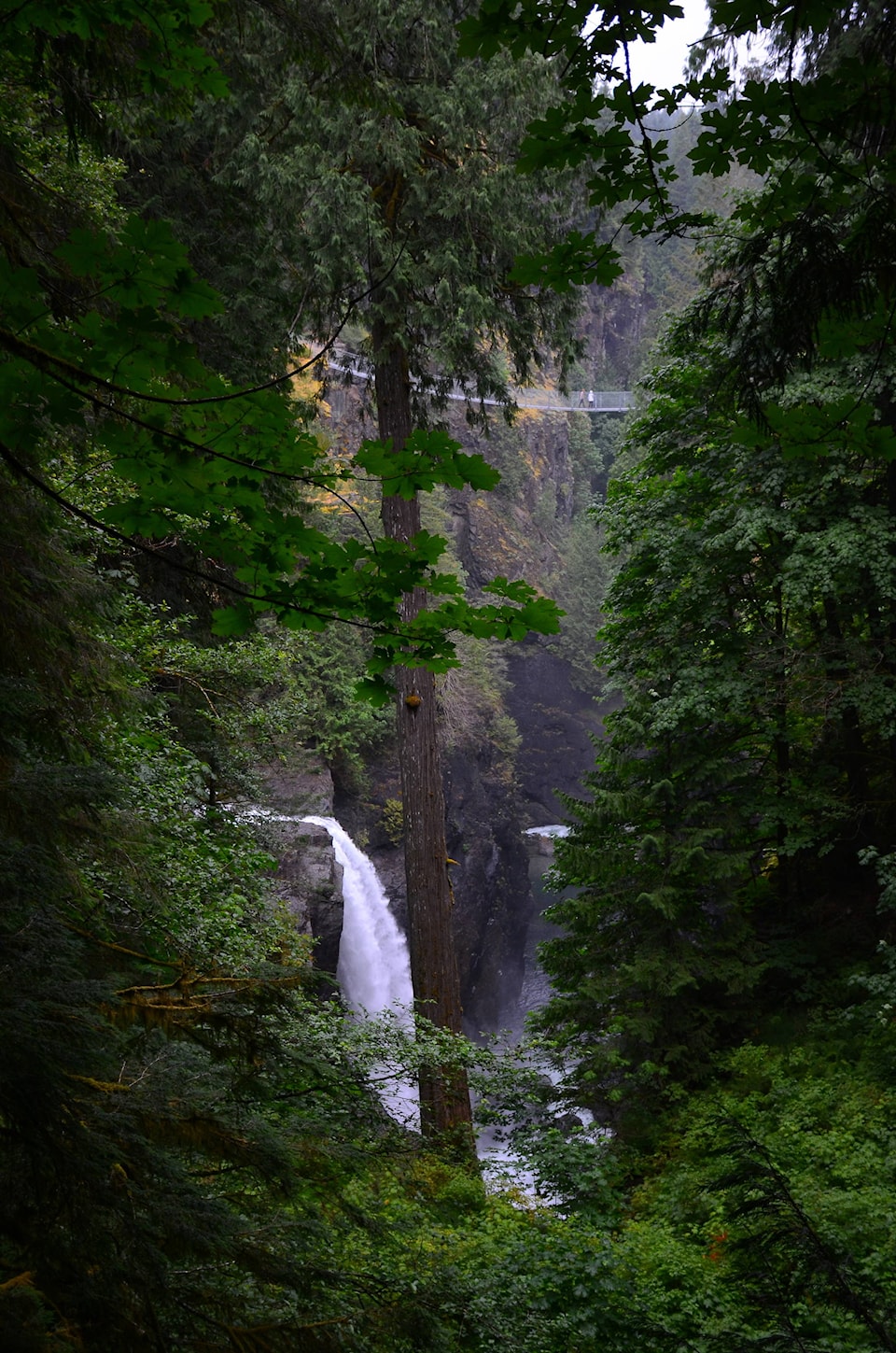The Campbell River is flowing high this week thanks to an increased spill down the Elk Falls Canyon.
The wet weather last week has increased the Upper Campbell Reservoir/Buttle Lake and Lower Campbell Reservoir levels, and on Nov. 22, significant snowmelt added to that increase, BC Hydro spokesperson Stephen Watson said.
To control the reservoir levels and in consideration of flood risk management for future storms, BC Hydro increased the water release down Elk Falls Canyon from four cubic metres per second (m3/s) to 100 m3/s beginning on Sunday night.
As is usual, BC Hydro asks the public to stay away from the Campbell River above Elk Falls, and below the John Hart generating station through to Friday.
The Upper Campbell Reservoir/Buttle Lake, which contains about 80 per cent of the system’s water storage, has risen 2.5 metres since Nov. 19 to the current level of 219.6 metres. The reservoirs continued to slowly rise through last week. The water inflows into this reservoir hit an hourly peak of 1,250 m3/s last Wednesday evening (Nov. 22), or the equivalent of 1,800 Olympic-sized swimming pools. The water inflows subsided by Friday but with up to about 100 mm or so of precipitation forecast for the watershed on Saturday evening through Sunday, and with that weather system tapping into subtropical latitudes, BC Hydro expects to see the modest spill continuing through to next Friday. The weather forecast this week looks to have smaller storms and a lower freezing level.
BC Hydro prefers the Upper Campbell Reservoir/Buttle Lake to not go above 220 metres and into the flood buffer, and certainly tries to avoid going above the flood control level of 220.5 metres.
“By proactively spilling water, the reservoir level is less likely to exceed 220 metres,” Watson said.
The five of the six remaining operating units in the John Hart generating station are running at full capacity. The total river flow Monday morning below John Hart was 200 m3/s.
“We will also be monitoring the downstream Quinsam River and the ocean tides. If needed, we will reduce discharges from John Hart during the high tides for flood risk management,” Watson said.
There is no risk of isolated downstream flooding at this time. The ocean tides continue to be helpful by being a bit on the low side for this time of year. The King tides are set to come in early December.
BC Hydro has a longstanding commitment to report to the community its management actions on the Campbell River hydroelectric system because of potential impacts on salmon habitat and flooding on the river.
